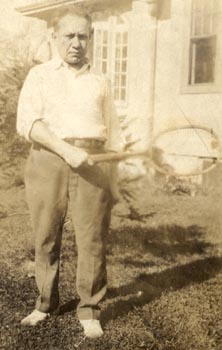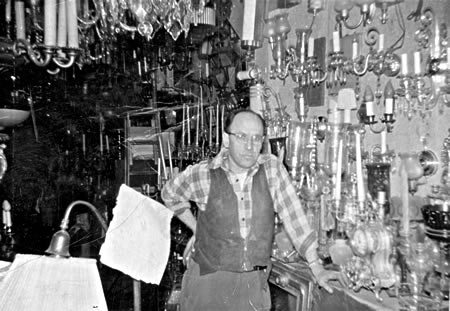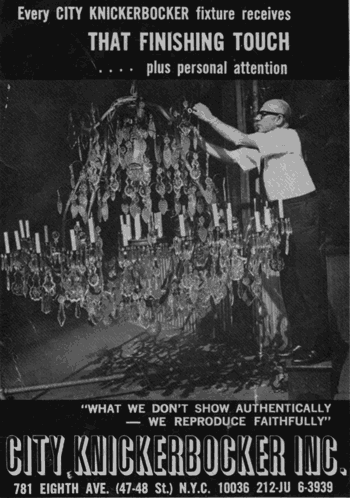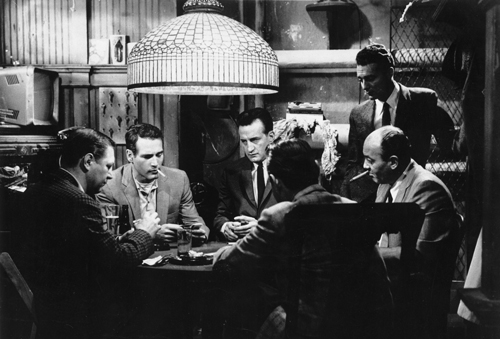A family owned and operated business for nearly a century, City Knickerbocker was founded in 1906 by Russian immigrant Adolph Liroff, who began his career by converting gasoliers and sconces to electric lamps for his neighbors in Brooklyn. As business grew, Adolph rented a space on 42nd Street between 8th and 9th Avenues in Manhattan, carrying the samovars to and from Brooklyn in burlap bags.

Adolph Liroff
Adolph loved the opera, and was delighted when he was asked to rent some of his fixtures to the Metropolitan Opera Company. Skilled at fabricating custom lighting that created just the right ambience for the Opera Company's sets, he was soon renting period fixtures to the Shuberts and other Broadway production companies, in addition to cultivating a growing business with the Metropolitan. By 1912-13, the business was largely rentals, with sales and repairs constituting a very small percentage of the profits.
In the 1950s, Adolph’s son Seymour took over the business and moved it to larger quarters on Eighth Avenue between 47th and 48th Streets in the heart of Manhattan’s Theatre District.

The new medium of television was exploding, and soon City Knickerbocker began supplying rentals to The Milton Berle Show, Ed Sullivan, Dinah Shore, Perry Como, Sid Caesar, and Jackie Gleason, among others. At the same time, theatrical lighting remained an important part of the business, and City Knickerbocker helped create the ambience - and props - for productions such as West Side Story, My Fair Lady and Hello Dolly.

A Young Seymour Liroff
In the 1970s, Seymour's son Kenneth expanded the business to include contract and custom lighting sales, supplying custom lighting fixtures to large hotels such as the Britannia Beach Hotel in Nassau, Bahamas as well as fixtures for The Steak and Brew chain.

The growth of the film industry in New York also offered new opportunities, and "City Knick," as it is affectionately called by its loyal customers, created props for two Oscar-winners: The Godfather and The Hustler. The beautiful fixtures created for the hit film Network caused a tremendous surge in sales and rentals of green-glass bankers lamps across the nation. At the same time, the demands of theatre continued to challenge and inspire the City Knickerbocker lighting designers. Among the most memorable projects was one for the Broadway production of The Diary of Anne Frank. The show required a chandelier that had to crash and fall apart each night - and be reassembled in time for the next evening's show.

By the time that Kenneth’s son Scott entered the family business in the 1980s, feature film production had become big business in New York City.

Four Generations of Liroff's
City Knickerbocker created props for Malcolm X, The Verdict, The Age of Innocence, Sabrina, Rounders, Meet Joe Black , and A Beautiful Mind, as well as every Woody Allen film. Daytime soap operas such as All My Children, As The World Turns, Guiding Light and One Life To Live, and nighttime dramas and comedies including The Soprano's, Law and Order, Sex and The City, and Third Watch regularly turned to City Knickerbocker for their props and lighting supplies. City Knickerbocker has done the lighting for every Saturday Night Live show since the October 11, 1975 (when the first show was aired). For an ever-growing list of productions City Knickerbocker has contributed to click here >